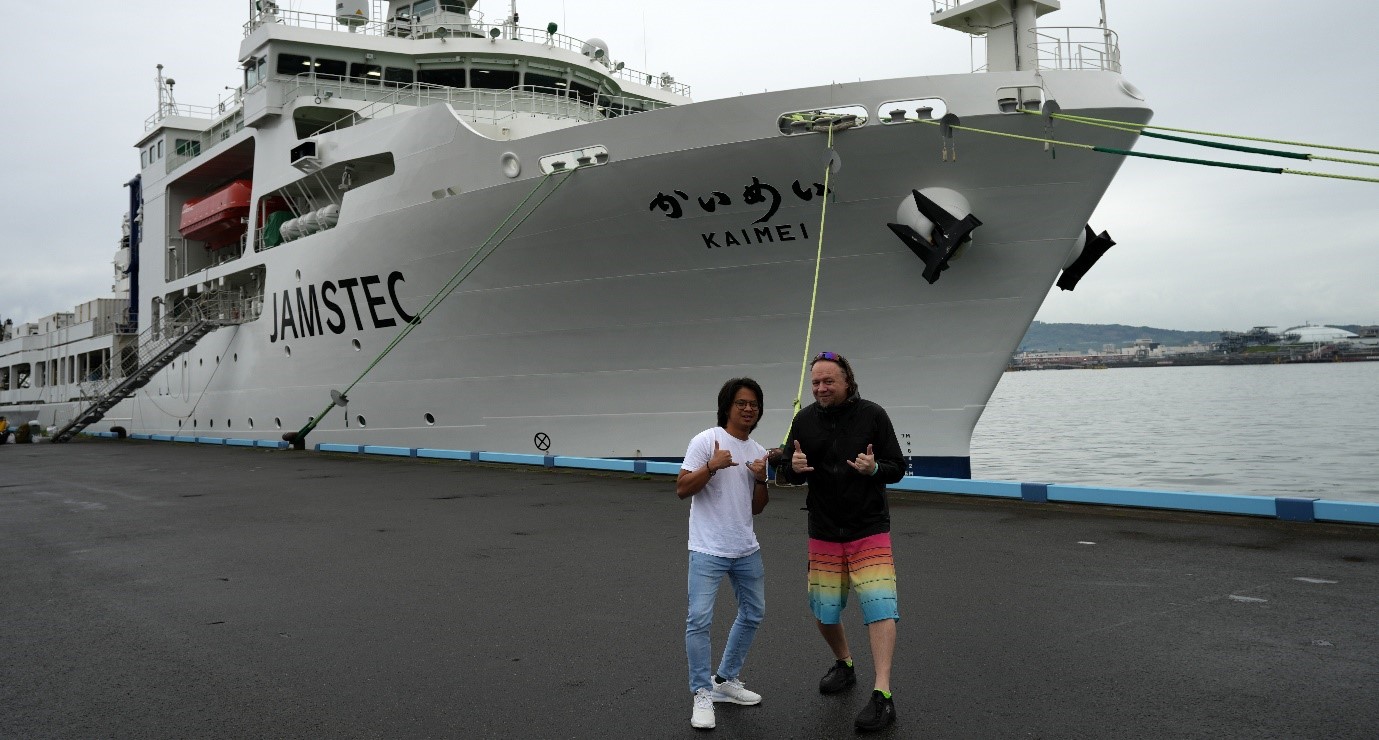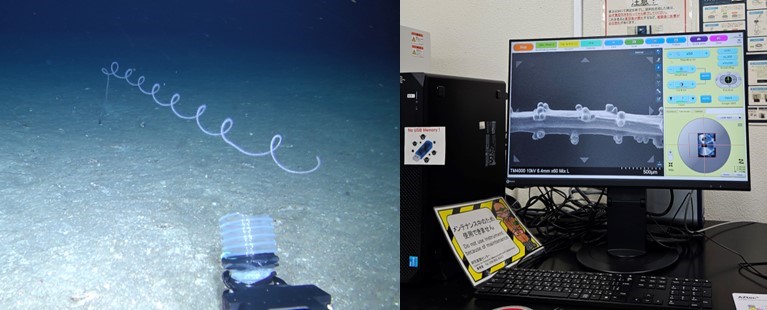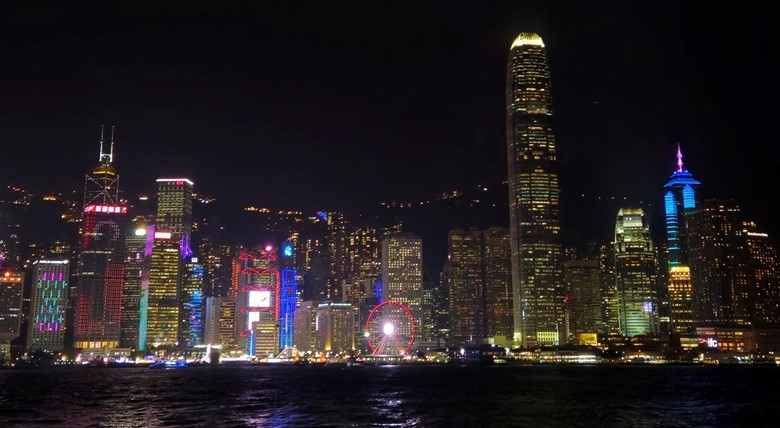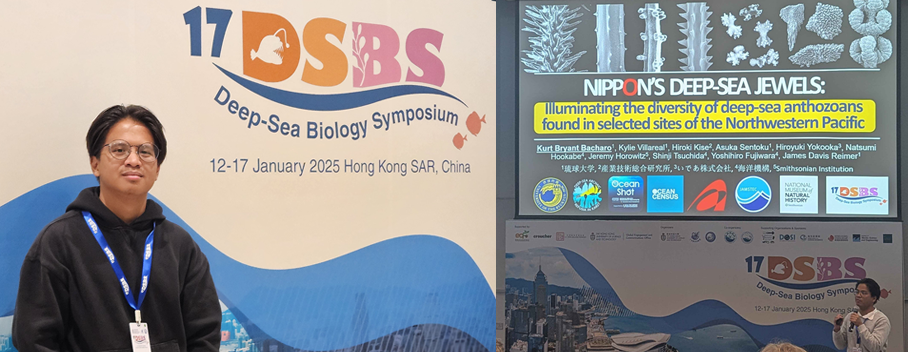DOSI Travel Award
Kurt Bryant Bacharo
University of the Ryukyus, Japan

The idea of doing deep-sea biology, had never occurred to me, as I have been used in studying the readily accessible shallow-water reefs in the Philippines, where there has been little to no infrastructural support for deep-sea research. In 2023, I joined Professor James Reimer’s laboratory at the University of the Ryukyus in Okinawa, Japan as a graduate student. It was here that I have been introduced to the Japan Agency for Marine-Earth Science and Technology (JAMSTEC). Through the generous grant poured by Ocean Census, I was able to participate in my first deep-sea research cruise aboard JAMSTEC’s R/V Kaimei that explored the biodiversity found in the limestone caves of the Daito Islands and the seamounts of the Kyushu-Palau Ridge. This cruise was led by chief scientist Dr. Yoshihiro Fujiwara, who was my supervisor’s former postdoctoral advisor.

The 17th DSBS marked a significant milestone as it is the first of its kind to be held in Asia. Since its inception, DSBS have been majorly held in the United States and countries across Europe that would provide logistical challenges for visa-restricted passport holders. The venue in Hong Kong that grants visa-free entry to nationals from approximately 170 countries and territories, stirs advantageously to scientists like myself, to be untroubled of the logistical burden. Further, the grants I received from the Deep Ocean Stewardship Initiative (DOSI) and Ocean Census helped in alleviating the financial strains.
Arriving in Hong Kong for the first time on the Sunday evening of January 12, I fell in love with the cosmopolitan city by its neon lights, and the stunning views of the towering skyscrapers. The efficient transportation system made it seamless for me to arrive at my hotel and get some much-needed rest. By Monday morning, it marked the start of the symposium sessions, shuttle buses near the hotels were facilitated by the local organizing team that would facilitate transportation directly to Hong Kong University of Science and Technology (HKUST). At the symposium venue, I was reunited with Dr. Leah Bergman and Dr. Natsumi Hookabe, senior colleagues at JAMSTEC who played key roles on the expedition I had participated in prior. Apart from them, I did not know anyone, except for few scientists that I knew by name from scientific articles. As the symposium progressed, familiarity becomes the norm where everyone in the community was just so welcoming and actively engaged.

I was a bit nervous waiting for my presentation which was on Friday morning, but I took that opportunity to assimilate new information by taking a keen interest and drawing inspiration into the exceptional research works of other people. Their topics ranged from theoretical, experimental, and systemic issues, each contributed to a broader understanding of deep-sea biology. Two talks resonate to me deeply, these include the presentation made by Dr. Julia Sigwart and Dr. Diva Amon. The former highlighted the need for modern approaches in taxonomy, an often-overlooked field, and is now, sadly being integrated with more economically motivated disciplines for it to secure funding. Whereas the latter, addressed the elephant in the room, on how deep-sea biology could be more inclusive, and equitable to all, particularly to scientists coming from low-to-middle-income and developing nations. On the day of my talk, I am comforted by the support provided by my JAMSTEC colleagues and newly acquainted friends. This was later followed by kind words from Dr. Michelle Taylor and Dr. Jessica Gordon, few of the deep-sea coral geeks present in the gathering.

Attending the 17th DSBS to share our work was a privileged that I am grateful for. But probably for someone coming from a humble background and who is just starting to dive into the deep-sea, the real rewards are the experiences gained, and the human connections that were built after the event. I am really looking forward to the 18th DSBS in Bergen!
